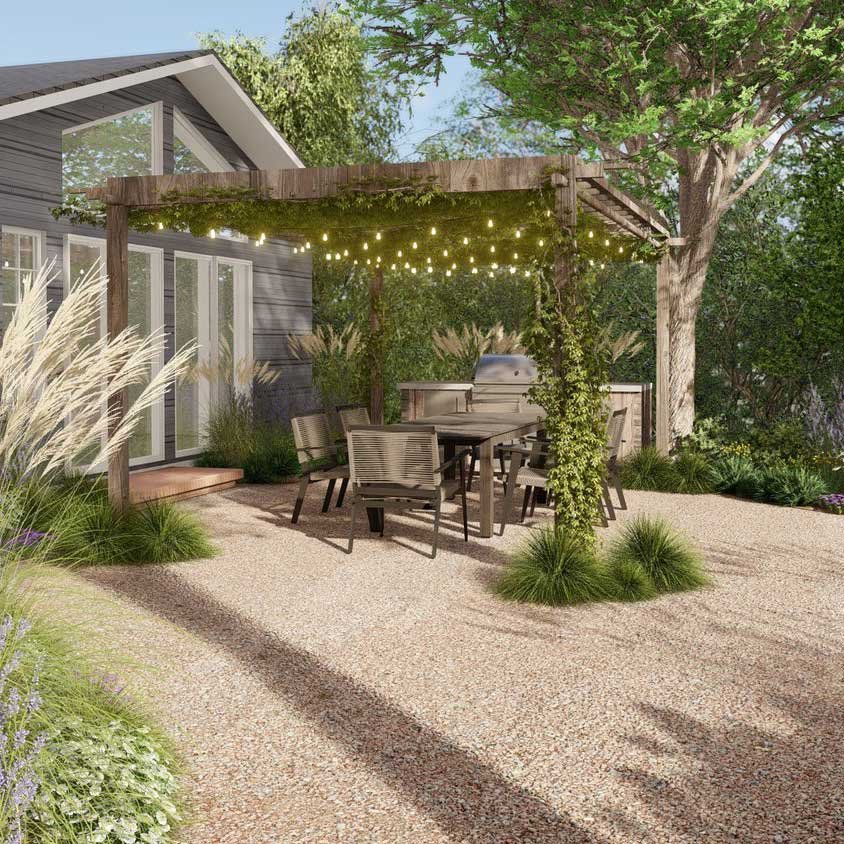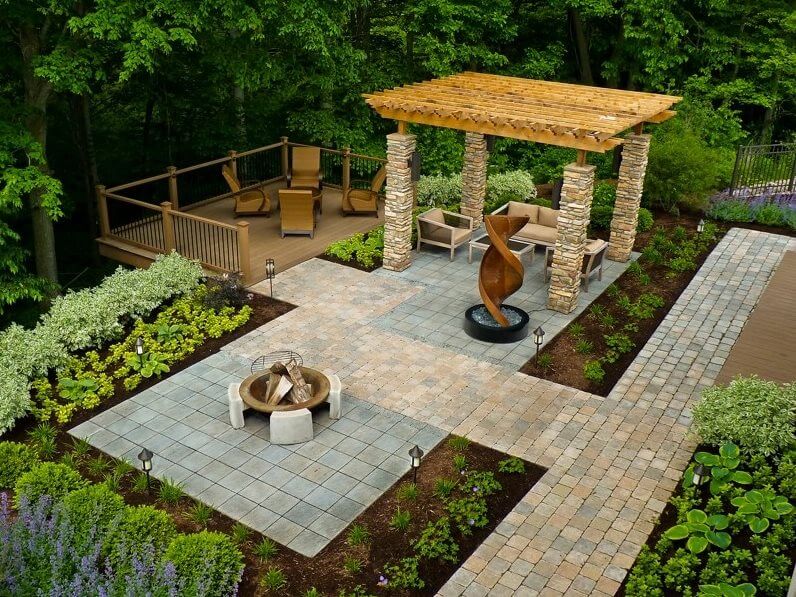The 8-Minute Rule for Landscapers
The 8-Minute Rule for Landscapers
Blog Article
The Ultimate Guide To Landscapers
Table of ContentsNot known Facts About LandscapersLittle Known Questions About Landscapers.An Unbiased View of LandscapersIndicators on Landscapers You Should KnowThe Landscapers PDFsThe Only Guide for Landscapers
- A yard function where water is represented by an accumulated rock product, generally a crushed rock or granite.- A stone or natural flagstone outdoor patio, path, or pathway built without a concrete base.- A stone retaining or complimentary standing wall surface built without making use of mortar. An extremely knowledgeable mason is required for a dry pile stone wall surface. Most wall surfaces in Portland are not dry piled, also if they show up to be. - An underground structure that gather water and enables it to slow down percolate right into the soil around it.
Landscape style that works with a sites' setting in both appearance and sustainability without negative effects to the environment. Edging in the landscape is a line of demarcation that creates aesthetic interest in the yard by separating one sector from one more sector. This can be visual or functional, maintaining one component (such as pea crushed rock) from getting mixed right into an additional (like bark dirt).
Locations can also have a sensation of "enclosure" offered by trees, other growings, fencings, or screens. The landscape near the entrance to a structure. A tree, hedge or vine, trained to expand on a wall or fencing into a particular pattern. Particularly helpful for fruit trees, making it easy to harvest the fruit and consisting of mess.
See This Report about Landscapers

The component in a landscape design or area in a landscape that is implied to be most famous. The focal point can be a plant, rock, sculpture, gathering room, or other landscape feature. A design of gardens or yard elements that worry straight lines, right angles and circles. Shrubs or shrubs situated in beds near the foundation of a home or various other structure.

The 9-Second Trick For Landscapers
Rock item, either rounded or fractured, that is reasonably little- generally 1" or much less. Low plants that are allowed or motivated to spread over a location. Can refer to any kind of "hard" garden elements including statuary or boulders but many commonly is used to refer to courses, outdoor patios, and walls.: Elevation difference between the degree of water in a fish pond (or the level of the pump if it rests outside the pond) and the top electrical outlet of water which influences performance of the water pump in gph (gallons per hour). Thick shrubs or trees that index create a fencing, display, or border.
A chemical made use of to manage weeds. Fence boards that run flat, typically used in modern or Japanese-inspired landscape layouts. Lines that define spaces within a landscape principle. These often extend from corners or key attributes of an existing framework. Appropriate usage of fictional lines can aid the landscape really feel attached to the home and other aspects.
A more relaxed garden controlled by rounded rather than straight bed lines and a much less stiff framework. Traditional PNW landscapes are informal. A plant that spreads even more than desired, or right into habitats where it does damages. Portland visit has a list of intrusive plants that should not be set up in landscapes because they can spread out to woodlands or waterways and be difficult to regulate.
The Only Guide for Landscapers
Can include head placements and protection, pipeline sizing, GPM specifications, and products needed to mount this system. Certified expert that designs landscapes, coached in design and architecture as well as in gardening.
The expert who intends and establishes landscape jobs, generally at a residential or tiny commercial degree with the significant design inspiration on plantings. Landscape developers typically have much less schooling than Landscape Architects and are not certified. A completed landscape style, detailing all components for the new landscape. This typically takes the kind of a drawing on paper.
Using lots of growings of the very same variety to load in a location in the landscape. This can reduce upkeep and water use in the garden.
A layer of garden compost or bark dust applied at the base of a plant. A plant that was present in a geographical place before other individuals started transforming the landscape.
Little Known Facts About Landscapers.
Just how the yard or a yard element is arranged in partnership to an existing or brand-new attribute or to an instructions. Yards that are not trimmed however grown in landscapes as perennials.

Tiny round crushed rock. Plants that offer seasonal interest and then pass away back in the wintertime. Annuals do not come back the following period, yet perennials do. Winter season lawn that is one of the most common lawn lawn in Portland, OR et cetera of the PNW.An open roofed structure over an outdoor patio or various other landscape attribute.
The most typical landscape crushed rock in the PNW. Area of the landscape created to take care of rain water until it can saturate right into the ground.
Creating a garden function being composed mostly of stones with growings that complement and can prosper in the rocky environment. Sprinkler head style that rotates a stream of water across an area.
The Only Guide to Landscapers

Report this page